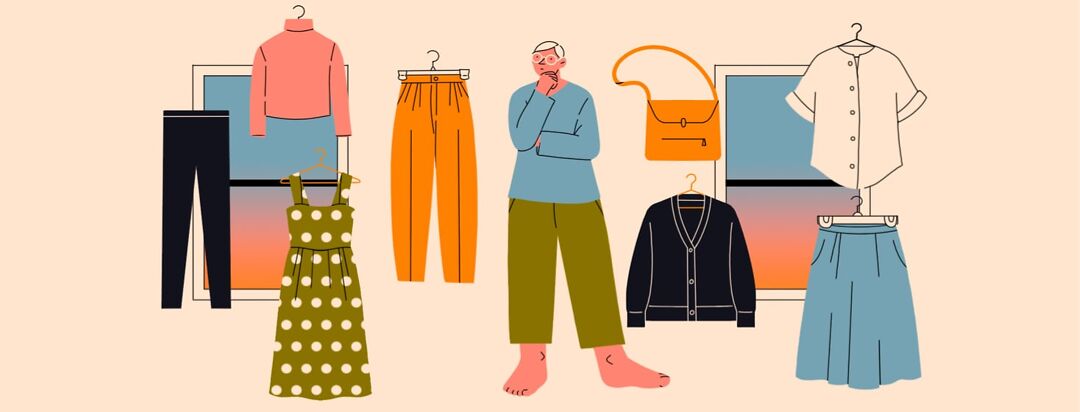Tips for Dressing With Chronic Hives
Reviewed by: HU Medical Review Board | Last updated: September 2024
If you have chronic hives, you are likely to become very aware of anything that touches your skin. You may not think that clothing matters when it comes to managing your chronic hives. However, clothing choice is important to reduce some of the symptoms of chronic hives.
How can clothing trigger hives?
Constant pressure and scratching are common triggers of hives. If your clothing is causing pressure on your skin or scratching your skin, it may be making your hives worse. This might happen if you have:1-3
- Worse hives where clothing is tighter, like around the waistband
- Worse hives where your skin comes into constant contact with clothes, like the armpits and behind the knees
- Itchiness or discomfort when wearing scratchy fabrics
- Worse symptoms when you are underdressed or overdressed for the weather
It is often hard to tell if your clothing is triggering symptoms. It can help to track what you wear each day in a symptom journal. Also track whether getting too cold or too warm seems to trigger symptoms. Over time, this can help you connect your clothing to your symptoms.
If you notice that certain types or pieces of clothing make your symptoms worse, you then know how to change your wardrobe. Fortunately, you can still find comfortable clothing options for any situation.
Clothes to avoid with chronic hives
If you notice that the way you dress makes your hives worse, you may want to avoid that clothing. In general, tighter and rougher fabrics tend to cause more problems. Tight-fitting clothing can cause friction and pressure on your skin. Some examples of tight clothing to avoid include:2
- Tight-fitting jeans
- Tight belts
- Shoes that are too small
Clothing that rubs or scratches your skin can also make hives worse. Avoid irritating fabrics and clothes that rub against skin. Examples of irritating clothing or accessories include:2,4
- Jeans or other clothing with heavy interior seams
- Wool sweaters and jackets
- Man-made fabrics, such as polyester
- Clothing that does not breathe well, such as Spandex
- Purses or hand bags worn on the shoulder
Sometimes, chemicals in clothing can cause problems. This includes dyes, glues, and chemicals that make clothing wrinkle-free or dirt-repellant. If you think chemicals in clothing are triggering your symptoms, avoid clothes with heavy amounts of dyes or treatments.2
What clothing is better to wear for hives?
It is still possible to dress well for any situation even if you are avoiding irritating clothes. Wearing layers is a good way to dress for different temperatures. You can then add or remove clothing to make sure temperature does not trigger your hives. Choosing softer and looser clothing can also help.4
Loose clothing will not cause as much pressure on or scratching of your skin. Examples of loose-fitting clothing include:2
- Cotton sweatpants
- Loose-fitting shirts, skirts, and dresses
- Pants with a loose elastic waist
- Slacks instead of jeans
- Cloth belts that are a bit loose
- Footwear that allows your feet to breathe
Choosing softer fabric can also prevent scratching or rubbing. Many factors determine the softness of a fabric. For example, softer fabrics tend to:5
- Have fibers that are thinner and more flexible
- Are made of plant fibers (such as cotton and bamboo) instead of man-made fibers (such as polyester and rayon)
- Have a higher thread count
Cotton is a common soft fabric. Other fabrics that are soft include silk, cashmere, and linen. Consider softness when you are buying clothing, shoes, and bedding.5
